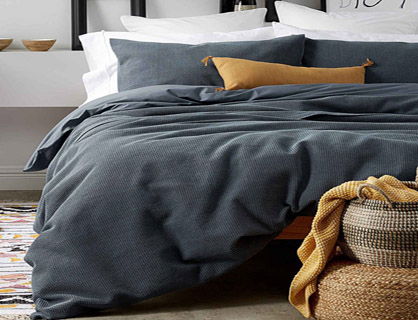
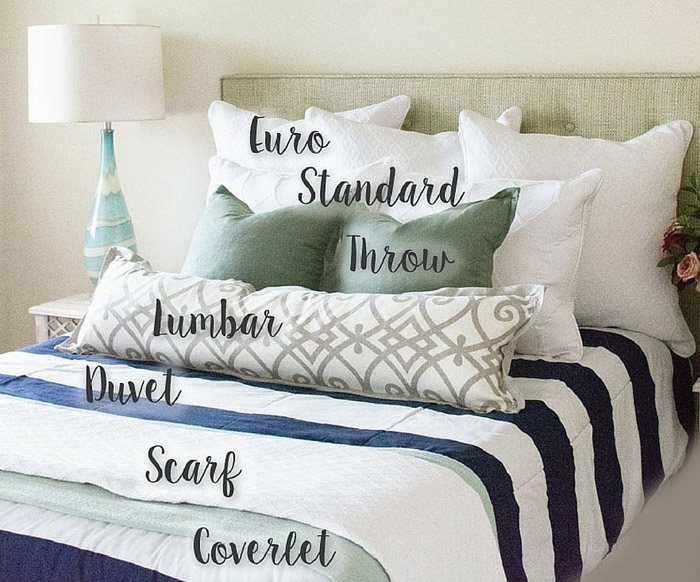
If we're honest with ourselves, the material on our beds isn't at the forefront of our minds very often. Most people tend to keep what they have for a long time without giving it much of a second thought.
Bedding's bedding right?
Others might assume that as long as you have that all-important high thread count, everything's just fine.
We spend a long time in our beds. And by a long time, I mean a long time. The average person spends well over twenty years sleeping in their bed, and that's before you factor in lazy mornings, naps and Netflix. If you planned on spending twenty years in a house, you would make it right for you. So why do so many of us skimp on our bedding? It's time to treat your bed like the King that it is. Or Queen, of course.
Keep reading for a comprehensive guide on how to up your sleeping game, once and for all.
Thread Count
This one comes first because it's the marker most people tend to use first when comparing bedding. Now while a higher thread count is definitely a good thing, a lot can be going on behind the scenes that makes it an unreliable metric for quality.

A lot of manufacturers use ultra-high thread count to mask the presence of lower quality, shorter fibers in their fabric, and the length of the fiber is the real linchpin. When it comes to cotton you'll want to look for long fibers, known as “long staple cotton” in order to get a more durable and softer feel. A good example of this is Egyptian cotton, which is prized for its supremely long and supple fibers. If you're looking at other types of materials like linen, thread count becomes a negligible factor.
Material
1. Cotton
That brings us on nicely to the material! Of course cotton is by far the most tried and trusted option. Used for centuries for its versatility, you get what you pay for with cotton. You can start at the bottom with a plain weave and lower thread count for more economical bedding, all the way up to the finest Egyptian cotton for a sumptuous and luxurious night's sleep. There's so many different ways to spin it together that each new option almost becomes a different material in its own right, and it's both versatile and practical.
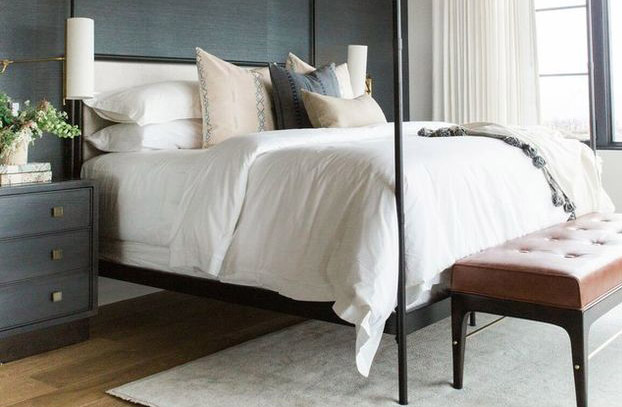
2. Alternative Natural Fibers
While the majority of people tend to use cotton, there are a few reasons why you might consider venturing a little further afield.
New technologies have allowed manufacturers to make bedding out of materials that not too long ago, were completely un-processable. Bamboo, eucalyptus and other natural fibers can now be spun into soft and luxurious sheets just like cotton, with the added benefit of an environmentally friendly, closed-system manufacturing process. This essentially means that the vast majority of material expended during processing is recycled, in stark contrast to the environmentally demanding process of cotton manufacture. Great for those working towards more eco-conscious living.
3. Linen
If you're after something with a little extra flair then linen is the ultimate choice. It's stylish, charmingly rustic and has its own uniquely airy feel, and as an added bonus it even gets softer the more you wash it. Linen is also incredibly durable, so much so that linen bedding very often gets passed down through families for many years. You do pay more for the privilege, but for top quality and supreme durability it's an investment that you might consider.
4. Mixes
You don't, of course, have to always have to have it one way or the other. There are mixes such as cotton-polyester blends that give you the best of both worlds. Synthetics like polyester aren't the finest of materials, but in terms of practicality and price, you can get some great value bedding. They're especially useful if you're looking to buy for multiple rooms and need to make your money go further.
The Weave
“There's more than one type of weave?” I hear you say. Yes!
When it comes to bedding, the fibers are spun into sheets in all kinds of different patterns, and every pattern feels different. The way the material is put together plays as much of a role in its feel as the material itself.
1. Percale
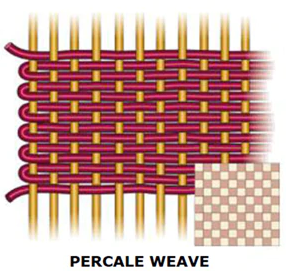
A plain weave that creates a matte, smooth feel. A pretty common option that's nice and crisp on your skin.
2. Sateen
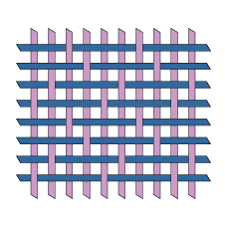
A weave where there are more fibers going in one direction than the other. This imbalance actually creates a smoother feel akin to satin, but does make it a little less durable.
3. Twill
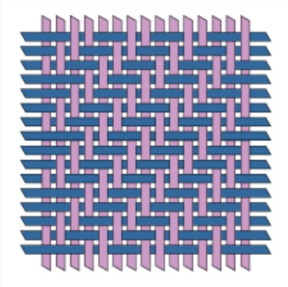
For an example of a twill weave take a look at your jeans, and no, people who choose this weave aren't sleeping in denim sheets. With the right material, twill weave creates a soft (but a little heavier) weave that drapes over you.
4. Flannel

Flannel is a much heavier and cozier cotton option, perfect for the wintertime. Vulnerable to pilling.
Pillows and Duvets
Duvets, blankets, a simple flat sheet, what you put on top of your bed depends on climate, season, and ultimately personal taste.
If you're looking for a low maintenance bedding solution, you can't go far wrong with a duvet. You can use it all year round and the cover comes off for easy washing. For warmer climates try layering a blanket over a flat sheet, allowing you to throw the top straight off if you get too hot. Since you have your (perfectly selected) flat sheet underneath, the material of the blanket isn't so important.
For both pillows and duvets, the stuff you fill it with is the important part. Most duvets and pillows are filled with one of three materials.
1. Wool

Soft, moisture-wicking and hypoallergenic. A cozy choice.
2. Synthetics
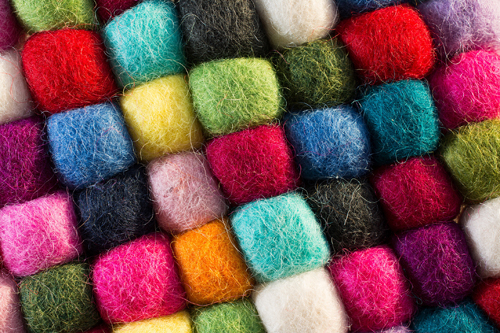
More economical, light and spongy, but more likely to irritate sensitive skin.
3. Down

Extremely soft, pricier, but billowy and light, good insulator.
The Finer Details
Consider which of these material properties are important to you, and see which materials provide those benefits.
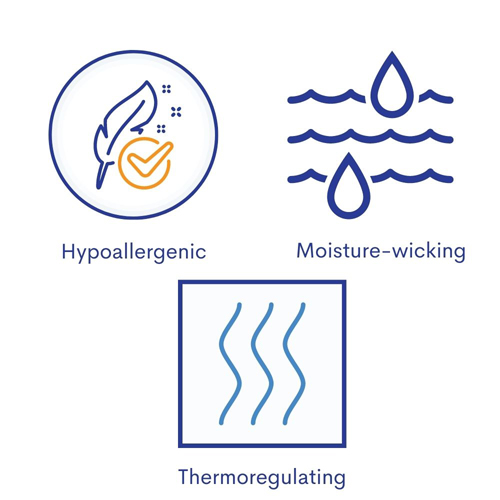
1.Hypoallergenic
Bamboo, eucalyptus, cotton, linen, more or less any natural fiber produced without harmful chemicals. Avoid synthetics if this is a point of interest.
2.Moisture-wicking
Linen, bamboo, eucalyptus, wool and some synthetic materials. If you find that cotton makes you feel a little clammy, go for the other more breathable natural fibers listed.
3.Thermoregulating
Linen, cotton, bamboo, eucalyptus. All these natural fibers keep you cool in summer and warm in winter. Linen is especially breathable due to the relatively large amount of air pockets between the threads. If you're going cotton, consider a percale weave.
 |
WRITTEN BY Benjithomas
I am a freelance copywriter, short fiction author and visual artist, and I write for a range of different outputs including articles, branding/web content and scriptwriting. I pen short stories which I am building into an anthology for future publication, and I am open for hire for virtually any creative writing project you may have in mind. I love to learn and write about new topics through research, and build connections with people through my work.
|



